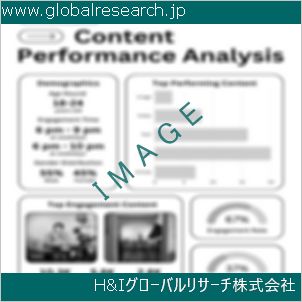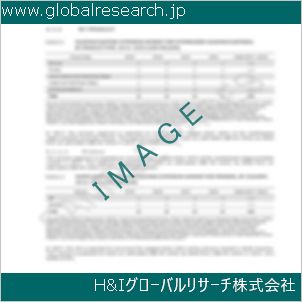Table of Contents
1 Industry Overview of Acridine
1.1 Definition and Specifications of Acridine
1.1.1 Definition of Acridine
1.1.2 Specifications of Acridine
1.2 Classification of Acridine
1.3 Applications of Acridine
1.3.1 Nuclear Application
1.3.2 Non-Nuclear Application
1.4 Industry Chain Structure of Acridine
1.5 Industry Overview and Major Regions Status of Acridine
1.5.1 Industry Overview of Acridine
1.5.2 Global Major Regions Status of Acridine
1.6 Industry Policy Analysis of Acridine
1.7 Industry News Analysis of Acridine
2 Manufacturing Cost Structure Analysis of Acridine
2.1 Raw Material Suppliers and Price Analysis of Acridine
2.2 Equipment Suppliers and Price Analysis of Acridine
2.3 Labor Cost Analysis of Acridine
2.4 Other Costs Analysis of Acridine
2.5 Manufacturing Cost Structure Analysis of Acridine
2.6 Manufacturing Process Analysis of Acridine
3 Technical Data and Manufacturing Plants Analysis of Acridine
3.1 Capacity and Commercial Production Date of Global Acridine Major Manufacturers in 2023
3.2 Manufacturing Plants Distribution of Global Acridine Major Manufacturers in 2023
3.3 R&D Status and Technology Source of Global Acridine Major Manufacturers in 2023
3.4 Raw Materials Sources Analysis of Global Acridine Major Manufacturers in 2023
4 Capacity, Production and Revenue Analysis of Acridine by Regions, Types and Manufacturers
4.1 Global Capacity, Production and Revenue of Acridine by Regions 2019-2024
4.2 Global and Major Regions Capacity, Production, Revenue and Growth Rate of Acridine 2019-2024
4.3 Global Capacity, Production and Revenue of Acridine by Types 2019-2024
4.4 Global Capacity, Production and Revenue of Acridine by Manufacturers 2019-2024
5 Price, Cost, Gross and Gross Margin Analysis of Acridine by Regions, Types and Manufacturers
5.1 Price, Cost, Gross and Gross Margin Analysis of Acridine by Regions 2019-2024
5.2 Price, Cost, Gross and Gross Margin Analysis of Acridine by Types 2019-2024
5.3 Price, Cost, Gross and Gross Margin Analysis of Acridine by Manufacturers 2019-2024
6 Consumption Volume, Consumption Value and Sale Price Analysis of Acridine by Regions, Types and Applications
6.1 Global Consumption Volume and Consumption Value of Acridine by Regions 2019-2024
6.2 Global and Major Regions Consumption Volume, Consumption Value and Growth Rate of Acridine 2019-2024
6.3 Global Consumption Volume and Consumption Value of Acridine by Types 2019-2024
6.4 Global Consumption Volume and Consumption Value of Acridine by Applications 2019-2024
6.5 Sale Price of Acridine by Regions 2019-2024
6.6 Sale Price of Acridine by Types 2019-2024
6.7 Sale Price of Acridine by Applications 2019-2024
6.8 Market Share Analysis of Acridine by Different Sale Price Levels
7 Supply, Import, Export and Consumption Analysis of Acridine
7.1 Supply, Consumption and Gap of Acridine 2019-2024
7.2 Global Capacity, Production, Price, Cost, Revenue, Supply, Import, Export and Consumption of Acridine 2019-2024
7.3 USA Capacity, Production, Price, Cost, Revenue, Supply, Import, Export and Consumption of Acridine 2019-2024
7.4 EU Capacity, Production, Price, Cost, Revenue, Supply, Import, Export and Consumption of Acridine 2019-2024
7.5 China Capacity, Production, Price, Cost, Revenue, Supply, Import, Export and Consumption of Acridine 2019-2024
7.6 Japan Capacity, Production, Price, Cost, Revenue, Supply, Import, Export and Consumption of Acridine 2019-2024
8 Major Manufacturers Analysis of Acridine
8.1 Manufacturer One
8.1.1 Company Profile
8.1.2 Product Picture and Specifications
8.1.2.1 Type I
8.1.2.2 Type II
8.1.2.3 Type III
8.1.3 Capacity, Production, Price, Cost, Gross and Revenue
8.1.4 Contact Information
8.2 Manufacturer Two
8.2.1 Company Profile
8.2.2 Product Picture and Specifications
8.2.2.1 Type I
8.2.2.2 Type II
8.2.2.3 Type III
8.2.3 Capacity, Production, Price, Cost, Gross and Revenue
8.2.4 Contact Information
8.3 Manufacturer Three
8.3.1 Company Profile
8.3.2 Product Picture and Specifications
8.3.2.1 Type I
8.3.2.2 Type II
8.3.2.3 Type III
8.3.3 Capacity, Production, Price, Cost, Gross and Revenue
8.3.4 Contact Information
8.4 Manufacturer Four
8.4.1 Company Profile
8.4.2 Product Picture and Specifications
8.4.2.1 Type I
8.4.2.2 Type II
8.4.2.3 Type III
8.4.3 Capacity, Production, Price, Cost, Gross and Revenue
8.4.4 Contact Information
8.5 Manufacturer Five
8.5.1 Company Profile
8.5.2 Product Picture and Specifications
8.5.2.1 Type I
8.5.2.2 Type II
8.5.2.3 Type III
8.5.3 Capacity, Production, Price, Cost, Gross and Revenue
8.5.4 Contact Information
…
9 Marketing Trader or Distributor Analysis of Acridine
9.1 Marketing Channels Status of Acridine
9.2 Traders or Distributors with Contact Information of Acridine by Regions
9.3 Ex-work Price, Channel Price and End Buyer Price Analysis of Acridine
9.4 Regional Import, Export and Trade Analysis of Acridine
10 Industry Chain Analysis of Acridine
10.1 Upstream Major Raw Materials Suppliers Analysis of Acridine
10.1.1 Major Raw Materials Suppliers with Contact Information Analysis of Acridine
10.1.2 Major Raw Materials Suppliers with Supply Volume Analysis of Acridine by Regions
10.2 Upstream Major Equipment Suppliers Analysis of Acridine
10.2.1 Major Equipment Suppliers with Contact Information Analysis of Acridine
10.2.2 Major Equipment Suppliers with Product Pictures Analysis of Acridine by Regions
10.3 Downstream Major Consumers Analysis of Acridine
10.3.1 Major Consumers with Contact Information Analysis of Acridine
10.3.2 Major Consumers with Consumption Volume Analysis of Acridine by Regions
10.4 Supply Chain Relationship Analysis of Acridine
11 Development Trend of Analysis of Acridine
11.1 Capacity, Production and Revenue Forecast of Acridine by Regions and Types
11.1.1 Global Capacity, Production and Revenue of Acridine by Regions 2024-2029
11.1.2 Global and Major Regions Capacity, Production, Revenue and Growth Rate of Acridine 2024-2029
11.1.3 Global Capacity, Production and Revenue of Acridine by Types 2024-2029
11.2 Consumption Volume and Consumption Value Forecast of Acridine by Regions, Types and Applications
11.2.1 Global Consumption Volume and Consumption Value of Acridine by Regions 2024-2029
11.2.2 Global and Major Regions Consumption Volume, Consumption Value and Growth Rate of Acridine 2024-2029
11.2.3 Global Consumption Volume and Consumption Value of Acridine by Types 2024-2029
11.2.4 Global Consumption Volume and Consumption Value of Acridine by Applications 2024-2029
11.3 Supply, Import, Export and Consumption Forecast of Acridine
11.3.1 Supply, Consumption and Gap of Acridine 2024-2029
11.3.2 Global Capacity, Production, Price, Cost, Revenue, Supply, Import, Export and Consumption of Acridine 2024-2029
11.3.3 USA Capacity, Production, Price, Cost, Revenue, Supply, Import, Export and Consumption of Acridine 2024-2029
11.3.4 EU Capacity, Production, Price, Cost, Revenue, Supply, Import, Export and Consumption of Acridine 2024-2029
11.3.5 China Capacity, Production, Price, Cost, Revenue, Supply, Import, Export and Consumption of Acridine 2024-2029
11.3.6 Japan Capacity, Production, Price, Cost, Revenue, Supply, Import, Export and Consumption of Acridine 2024-2029
12 New Project Investment Feasibility Analysis of Acridine
12.1 New Project SWOT Analysis of Acridine
12.2 New Project Investment Feasibility Analysis of Acridine
13 Conclusion of the Global Acridine (CAS 260-94-6) Industry 2024 Market Research Report
| ※参考情報 アクリジンは、化学式 C13H9N の有機化合物で、CAS番号は260-94-6です。この物質は、主にアミノ化合物として知られ、多くの化学応用が存在します。アクリジンは、特有の黄色からオレンジの蛍光を持つ結晶性の固体であり、主に香料や染料の合成に利用される化合物です。 アクリジンの特徴としては、まずその構造が挙げられます。アクリジンは、三つの環状構造を持つ平面型のアミンで、非常に安定しています。このため、様々な化学的置換反応に対応できる柔軟性があります。また、アクリジンは水に溶けにくく、アセトンやエタノール、四氯化炭素などの有機溶媒には容易に溶解します。これにより、有機化学および薬品合成において重要な役割を果たしています。 アクリジンは、薬理学的にも興味深い物質です。特に、アクリジン誘導体は、抗ウイルス剤や抗癌剤としての利用が検討されています。具体的には、アクリジンとその誘導体は、細胞分裂を妨げることで腫瘍細胞の増殖を抑制する効果があることが知られています。また、アクリジンはDNAとの相互作用があり、これが分子生物学的研究においても注目されています。 アクリジンの用途は多岐にわたります。染料産業では、アクリジンは代表的な染色剤として広く使用されています。特に、酸性媒体での発色特性が優れており、特定の繊維に対して高い親和性を示します。そのため、テキスタイルや皮革の染色において重宝されています。 また、アクリジンは農薬や医薬品の合成においても応用されています。農薬の分野では、特定の殺虫剤や除草剤の前駆体として機能し、効果的な農業生産を支える役割を果たしています。医薬品においては、抗菌作用を持つアクリジン誘導体が感染症治療の重要な成分として利用されています。 さらに、アクリジンは光学機器や電気的応用にも関与しています。蛍光性に優れる特性を活かして、光センサーやディスプレイ技術において利用されることがあります。このように、アクリジンは多岐にわたる分野での応用が検討されており、その技術的な進展に寄与しています。 アクリジンに関連する技術として、合成方法や反応性があります。一般的な合成経路には、アミノ基を持つ化合物からの誘導体合成があり、これには多段階の化学反応が関与します。具体的には、アクリジンの合成には、ベンゼン環を含む化合物のニトロ化、還元、アミノ化反応が含まれることがあります。これにより、目的とするアクリジン誘導体を得るための多様な戦略が考案されています。 また、アクリジンは、化学センサーの開発にも関連しています。これらのセンサーは、特定の環境条件や化学成分に応じて蛍光的な変化を示すもので、環境モニタリングや医療診断において重要な役割を果たしています。このように、アクリジンに基づく技術は、現代の科学技術において重要な位置を占めています。 総じて、アクリジンは多様な特性を持ち、化学産業や医療、環境科学における重要な化合物です。その利用は今後も広がり続けると考えられ、さらなる研究と技術革新が期待されています。アクリジンの合成、応用、そしてそれに関連する技術は、化学分野の発展に大きく寄与しています。 |
❖ 免責事項 ❖
http://www.globalresearch.jp/disclaimer












